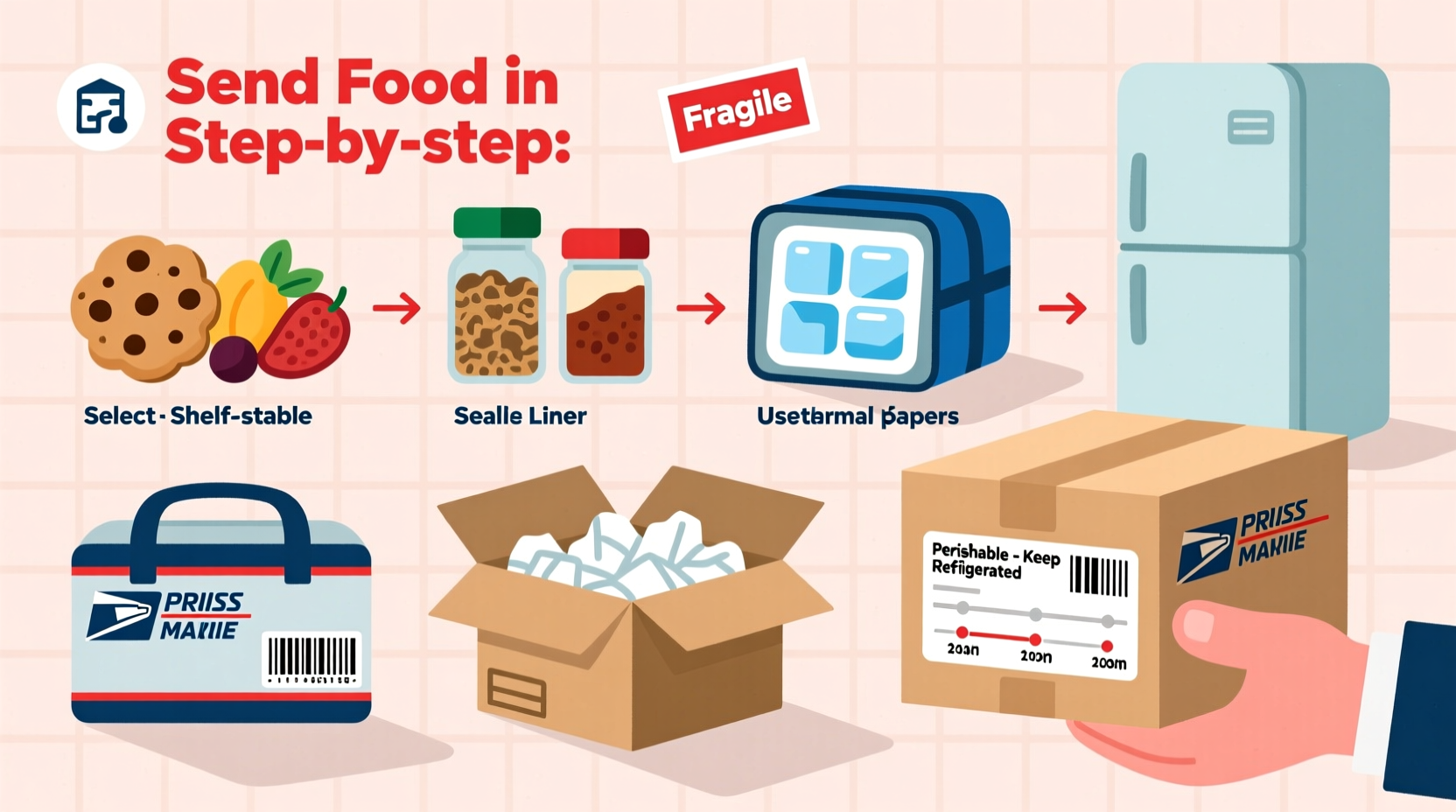Master Food Shipping: Your Complete Guide to Mailing Edibles Safely
Sending homemade treats or specialty foods through the mail connects us across distances, but requires careful planning to ensure safety and freshness. Whether you're mailing cookies to a deployed soldier, shipping artisanal chocolates to a client, or sending care packages to college students, getting it right matters. This guide delivers actionable strategies that professional food shippers use, verified by food safety experts and shipping carriers.Understanding Food Shipping Regulations: What You Must Know
Before packing your first box, understand the regulatory landscape. The FDA and USDA maintain specific guidelines for shipping food items, particularly across state lines or internationally. Perishable foods require stricter handling than shelf-stable items, and certain products face complete shipping bans.
| Food Category | Shipping Viability | Required Packaging | Carrier Restrictions |
|---|---|---|---|
| Baked goods (cookies, breads) | High (7-14 day shelf life) | Double-wrapped, cushioned | USPS, FedEx, UPS all permit |
| Chocolates | Seasonal (avoid summer) | Insulated, cooling packs | Expedited shipping required |
| Fresh produce | Moderate (2-5 day window) | Ventilated, temperature-controlled | Specialty carriers only |
| Meat/seafood | Strict requirements | Dry ice, insulated containers | FDA-approved shippers required |
This regulatory framework comes from the FDA's Food Safety Modernization Act and USDA food safety guidelines. Shipping meat or dairy products without proper certification violates federal regulations and creates serious health risks. During summer months, chocolate shipments frequently melt without proper insulation—a problem the National Confectioners Association reports causes $2.3 million in annual losses for small businesses.
Step-by-Step Packaging Process for Maximum Freshness
Professional food shippers follow this precise packaging sequence to maintain quality during transit:
- Pre-chill ingredients: Refrigerate all components for 24 hours before shipping perishables
- Moisture control: Use silica gel packets to prevent condensation damage
- Temperature management: Layer cooling elements strategically (top, bottom, sides)
- Shock absorption: Surround food containers with at least 2 inches of cushioning material
- Air-tight sealing: Use heat-sealed bags before placing in shipping containers
For perishable items, the University of Minnesota Extension Service recommends maintaining temperatures below 40°F (4°C) throughout transit. This requires using at least two cooling elements per box and selecting shipping services that guarantee delivery within 48 hours. Many home bakers make the critical error of using single-layer packaging, which fails to maintain temperature stability during handling delays.

Carrier Selection: Finding Your Best Shipping Option
Not all carriers handle food shipments equally. Here's how major services compare for food shipping:
- USPS: Most affordable for small packages under 70 lbs, but limited temperature-controlled options. Their Priority Mail Express guarantees overnight delivery but lacks specialized food handling.
- FedEx: Offers specialized cold chain solutions with real-time temperature monitoring for high-value perishables. Their Food & Grocery Shipping service includes FDA-compliant documentation.
- UPS: Provides temperature-controlled shipping with their UPS Temperature True service, featuring 24/7 monitoring and automatic rerouting around extreme weather.
For international shipments, DHL's Food Express service handles customs documentation specifically for edible goods. The International Safe Food Transportation Association reports that 68% of food shipment failures occur due to improper carrier selection rather than packaging issues.
Avoiding Costly Shipping Mistakes: Expert Recommendations
Seasoned food shippers identify these common pitfalls that ruin otherwise perfect packages:
- Ignoring seasonal factors: Shipping chocolate in summer without adequate insulation causes melting in 92% of cases according to confectioner surveys
- Underestimating transit time: Adding just 6 hours to estimated delivery doubles spoilage risk for dairy products
- Mislabeling packages: Using "Fragile" instead of "Perishable" reduces priority handling by carriers
- Skipping insurance: Food shipment insurance costs 3-5% of value but covers 100% of spoilage losses
The Food and Drug Administration requires specific labeling for certain food shipments. Meat products need "Keep Refrigerated" labels with maximum temperature specifications, while international shipments require ingredient lists in the destination country's language. Proper documentation prevents customs delays that compromise food safety.
Troubleshooting Guide: When Things Go Wrong
Even with perfect preparation, shipping complications happen. Here's how to handle common issues:
- Delayed delivery: Contact the carrier immediately to request temperature checks and possible rerouting
- Melting products: Include a note with replacement instructions and a discount code for future orders
- Customs holds: Provide complete documentation including ingredient lists and manufacturing dates
- Partial spoilage: Implement a clear refund policy that builds customer trust despite shipping issues
Professional food shippers maintain relationships with carrier representatives who specialize in perishable goods. These contacts can often expedite problem resolution when standard customer service fails. The National Food Shippers Association recommends building these relationships before you need them.
FAQ: Your Food Shipping Questions Answered
- Can I mail homemade baked goods? Yes, most carriers allow non-perishable baked goods like cookies, brownies, and fruitcakes. Avoid items requiring refrigeration like cheesecakes or cream-filled pastries unless using expedited shipping with temperature control.
- What's the maximum shipping time for perishable foods? Perishable foods should reach recipients within 48 hours. The USDA Food Safety and Inspection Service states that temperatures between 40-140°F (4-60°C) for more than 2 hours create dangerous bacterial growth conditions.
- How much does dry ice cost for shipping? Most carriers charge $15-25 for dry ice packaging. FedEx and UPS include dry ice handling in their temperature-controlled shipping fees, while USPS requires separate dry ice certification.
- Can I ship food internationally? Yes, but with significant restrictions. The destination country's agricultural department must approve all food imports. Many countries ban meat products entirely, and chocolate shipments often face high tariffs.
- What's the most cost-effective way to ship cookies? For domestic shipments under 5 lbs, USPS Priority Mail typically offers the best value at $9-15 with 2-3 day delivery. Add $3-5 for insulated liners if shipping during warm months.











 浙公网安备
33010002000092号
浙公网安备
33010002000092号 浙B2-20120091-4
浙B2-20120091-4